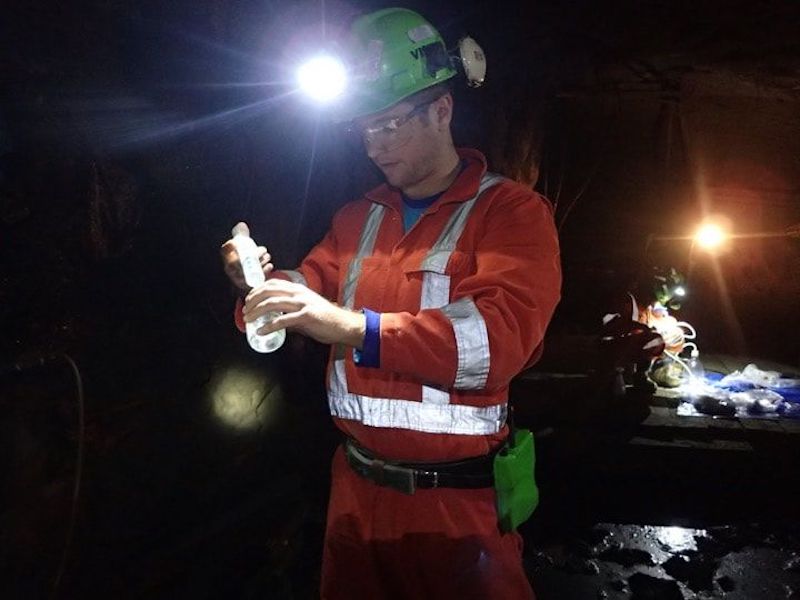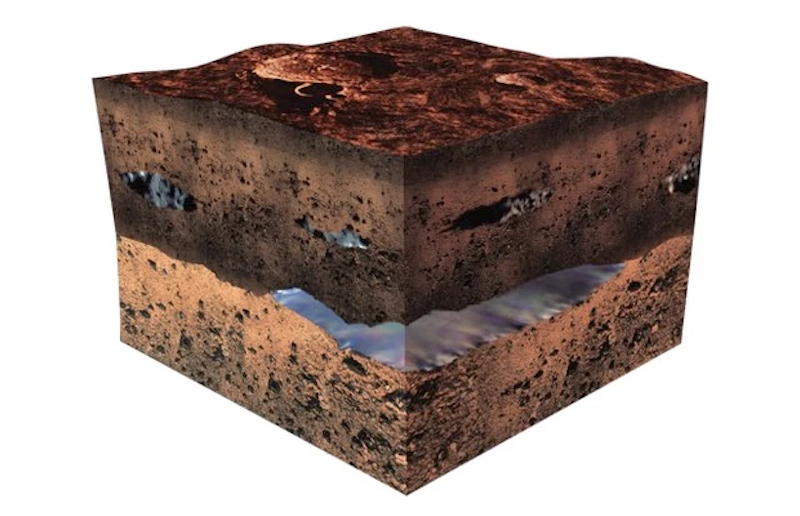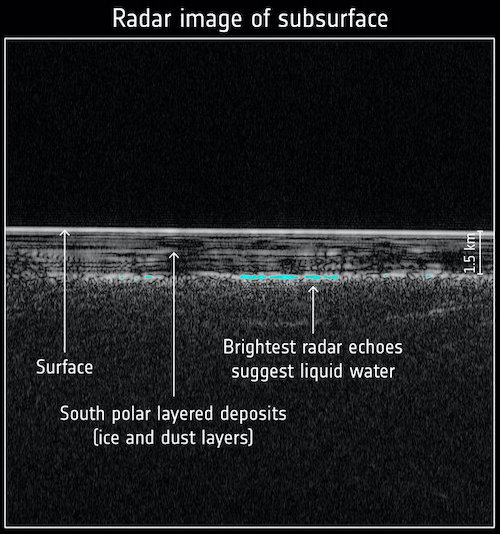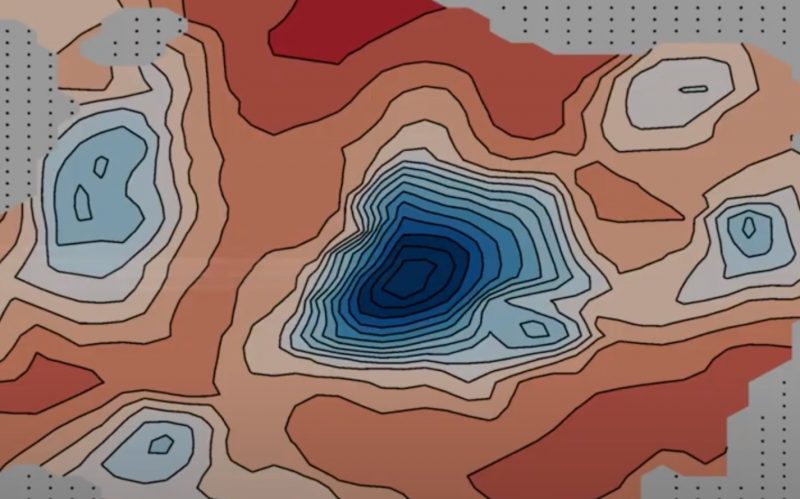
Has life ever existed on Mars? Could there still be life somewhere on the planet today? Those are still unanswered questions, but growing evidence over the past few decades has suggested that ancient Mars was quite habitable, at least for microscopic organisms. Evidence for the possibility of the existence present-day Martian life has also increased.
A new study from scientists at Brown University suggests that the Martian subsurface might be a good place to look for possible present-day microbial life on the planet. It’s an idea that has also been suggested in in other studies, but the new research, published April 15, 2021, in the peer-reviewed journal Astrobiology, finds evidence that rocks below the planet’s surface could produce the same kinds of chemical energy that sustain microbial life underground on Earth.
The scientists came to this tentative but tantalizing conclusion after studying Martian meteorites, pieces of Martian rock that eventually landed on Earth after being blasted off Mars’ surface by impacts. By analyzing the chemical composition of the meteorites, the researchers determined that if those rocks were in continuous contact with water, they would produce the same kind of chemical energy that supports microbial communities below the surface on Earth.

The results are exciting since the rocks are thought to represent a wide swath of the Martian crust. Jesse Tarnas, a postdoctoral researcher at NASA’s Jet Propulsion Laboratory who led the study, said in a statement:
The big implication here for subsurface exploration science is that wherever you have groundwater on Mars, there’s a good chance that you have enough chemical energy to support subsurface microbial life. We don’t know whether life ever got started beneath the surface of Mars, but if it did, we think there would be ample energy there to sustain it right up to today.
Tarnas led the study while completing his Ph.D. at Brown University.
The possibility of present-day life may then be dependent on there being groundwater or other subsurface water on Mars. We know from rover and orbital missions that there is ample evidence for groundwater in Mars’ past, but what about now?
The researchers say that there should be groundwater in places on Mars even now, and indeed, the first evidence for subsurface water on Mars was found in 2018. The Mars Advanced Radar for Subsurface and Ionosphere Sounding (MARSIS) instrument on the Mars Express orbiter found evidence for a 12.5-mile wide (20-km wide) lake beneath the ice at the Martian south pole. The water is thought to be kept liquid by salts and pressure from the ice above it. In October 2020, three more smaller but similar lakes close to the first one were also announced.
Despite the cold subsurface environment, such lakes or other groundwater could potentially still support life today, if it ever started. In similar conditions on Earth, vast biomes exist completely separated from the world above on the surface. The microbes in these biomes use the byproducts of the chemical reactions for energy, despite the lack of sunlight. Biomes are defined as “the world’s major communities, classified according to the predominant vegetation and characterized by adaptations of organisms to that particular environment.”

How do those reactions happen?
They occur when rocks below the surface come into contact with water. Radiolysis, for example – the dissociation of molecules by ionizing radiation – happens when radioactive elements within rocks react with water trapped in pores and fracture spaces. The chemical reaction breaks the water molecules into hydrogen and oxygen. The hydrogen dissolves in the remaining groundwater, while the oxygen is soaked up by minerals such as pyrite (also known as fools gold). This forms sulfate minerals. One prime location for this kind of chemical activity is the Kidd Creek Mine in Ontario, Canada.
This is great for microbes, which consume the hydrogen for fuel, and use the oxygen to “burn” the fuel.
Microbial ecosystems such as this have been found on Earth more than a mile (1.6 km) deep underground, where the water has never seen sunlight for more than a billion years. These organisms are known as sulfate-reducing microorganisms.
Since these environments are common on Earth, could they also exist on Mars? The researchers decided to look for evidence of similar radiolysis habitats beneath the Martian surface. They combined data from the Curiosity rover, orbiters and directly from the meteorites. They searched specifically for radioactive elements like thorium, uranium and potassium, along with sulfide minerals that could be converted to sulfate. The researchers also wanted to see if the rocks had enough pore space to hold liquid water.

The results were very encouraging. All the necessary ingredients were found, in enough abundance, in several types of Martian meteorites. Older rocks like regolith breccias were found to be the most likely to be able to support microbial life. Those rocks from Mars’ crust are more than 3.6 billion years old.
If there is a good chance of microbial life beneath Mars’ surface today, then how do we look for it?
You would need to dig a lot deeper than any rover or lander has before, using a small drill probe, according to the researchers. It would be challenging, but not impossible. If such an endeavor were to actually find life, it would then of course be well worth the effort. Co-author Jack Mustard at Brown University said:
The subsurface is one of the frontiers in Mars exploration. We’ve investigated the atmosphere, mapped the surface with different wavelengths of light and landed on the surface in half-a-dozen places, and that work continues to tell us so much about the planet’s past. But if we want to think about the possibility of present-day life, the subsurface is absolutely going to be where the action is.
A similar study from Rutgers University reported on in December 2020 also recommended looking deep underground for any Martian microbes. That study focused on how geothermal heat could melt subsurface ice.

NASA’s Perseverance rover has just started its mission to search for signs of ancient life in an ancient river delta, and ESA’s ExoMars rover Rosalind Franklin will soon launch to look for evidence of life as well. The rover can drill deeper than Perseverance, about 2 meters, although probably still not enough to reach any groundwater that may exist below. These are the first missions since the Viking landers in the late 1970s/early 1980s that are designed specifically to look for life (with mixed results still debated today). Up until now, most other rovers and landers have focused on finding evidence for habitable conditions on ancient Mars, which they have done, in spades.
If Tarnas and his colleagues are right, then to find current life, we need to look underground. The old adage of Mars exploration may well turn out to be right after all: to look for life, follow the water.
Bottom line: Mars has the right ingredients for current subsurface microbial life, according to a new study from Brown University.
Source: Earth-like Habitable Environments in the Subsurface of Mars
Read more: SETI’s Nathalie Cabrol on modern-day Mars life, underground
Read more: Active volcanoes on Mars today? If so, they may point to Mars habitability











